Maya News Updates 2008, No. 39: Chichén Itzá, Yucatan - Chichén's Elite Residence Introduced to the Public
Some 600 to 700 meters south of the Las Monjas building in Chichén Itzá, for over 10 years specialists of the Instituto Nacional de Antropología e Historia have worked on the excavation, exploration, and consolidation of the probable residencial area of the elite at the site. Archaeological work at this part of the site is near to completion. The elite residence is known as the "Group of the Temple of the Initial Series" and today, Tuesday August 5, 2008, this part of the site (remaining closed for visitors) was introduced yesterday to the more general public, as reported today by the Mexican daily newspaper La Jornada (edited by MNU):
Develan datos sobre sitio para la elite maya - Este lunes, la delegación estatal del Instituto Nacional de Antropología e Historia (INAH), dio a conocer que en Chichén Itzá había un sitio para una elite maya, destinado en exclusiva para personas políticamente influyentes, información que, por motivos de seguridad, se reservó durante 10 años.
La delegada del organismo, Federica Sodi Miranda, afirmó que “por razones de seguridad”, el sitio denominado Templo Inicial fue mantenido en secreto, mientras se realizaban en él trabajos de restructuración, que hoy están prácticamente terminados. Añadió que el lugar, que se piensa era exclusivo para los mayas ricos y poderosos de la clase gobernante, fue construido entre los años 800 y mil, y constituye un hallazgo importante sobre la cultura maya de Yucatán.
Por su parte, José León Osorio, encargado de los trabajos de rescate, precisó que el sitio consta de varios edificios y estructuras, entre ellos los denominados Templo de Los Monos, Casa de Los Falos, Palacio de los Dinteles y Templo de Columnas. Indicó que el lugar ocupa de 25 a 30 kilómetros cuadrados y se localiza en la zona del Chichén Itzá viejo, el cual no está abierto al público.
En el nuevo sitio arqueológico aparece una inscripción con motivos mayas, donde según la traducción hecha por expertos, se cree que es como una suerte de placa de inauguración de Chichén Itzá, que data de enero del año 878. De acuerdo con León Osorio, esa fecha podría ser la que por muchos años arqueólogos mexicanos y extranjeros buscaron para tener un dato exacto de la construcción de Chichen Itzá (source La Jornada).
La delegada del organismo, Federica Sodi Miranda, afirmó que “por razones de seguridad”, el sitio denominado Templo Inicial fue mantenido en secreto, mientras se realizaban en él trabajos de restructuración, que hoy están prácticamente terminados. Añadió que el lugar, que se piensa era exclusivo para los mayas ricos y poderosos de la clase gobernante, fue construido entre los años 800 y mil, y constituye un hallazgo importante sobre la cultura maya de Yucatán.
Por su parte, José León Osorio, encargado de los trabajos de rescate, precisó que el sitio consta de varios edificios y estructuras, entre ellos los denominados Templo de Los Monos, Casa de Los Falos, Palacio de los Dinteles y Templo de Columnas. Indicó que el lugar ocupa de 25 a 30 kilómetros cuadrados y se localiza en la zona del Chichén Itzá viejo, el cual no está abierto al público.
En el nuevo sitio arqueológico aparece una inscripción con motivos mayas, donde según la traducción hecha por expertos, se cree que es como una suerte de placa de inauguración de Chichén Itzá, que data de enero del año 878. De acuerdo con León Osorio, esa fecha podría ser la que por muchos años arqueólogos mexicanos y extranjeros buscaron para tener un dato exacto de la construcción de Chichen Itzá (source La Jornada).
Addendum: The date on the Temple of the Initial Series Lintel is recorded on the underside of the lintel as 10.2.9.1.9, 9 Muluk 7 Sak, or July 26, AD 878 (correlation constant 584,285; Julian [Gregorian: +4 days]). This is the only surviving complete "Initial Series" (or Long Count) date at Chichen Itza, of possibly two others only small and nearly non-legible vestiges have survived (High Priest's Grave, Fragment 168 [part of large glyphic panel]; Temple of the Tables, Serpent's Tail [re-used lintel]). The text on the underside of the lintel continues with a dedicatory text on the carving of a lintel-edge (pakabti') of a house (otot) belonging to a certain person. Others mentioned in this text (through still undeciphered relationship statements) include K'ak' Upakal (here in its abbreviated version, in full K'ak' Upakal K'inich K'awil), the most mentioned and important figure in the hieroglyphically recorded history at the site between circa AD 870-890. The front of the lintel repeats the date in a different manner (tenth tun in k'atun 1 Ajaw, or a date between AD 878-879) and provides the names of two, possibly three local gods who supervized and witnessed the dedication. I see no evidence in these passages that this text refers to the construction (foundation?) date of Chichen Itza.







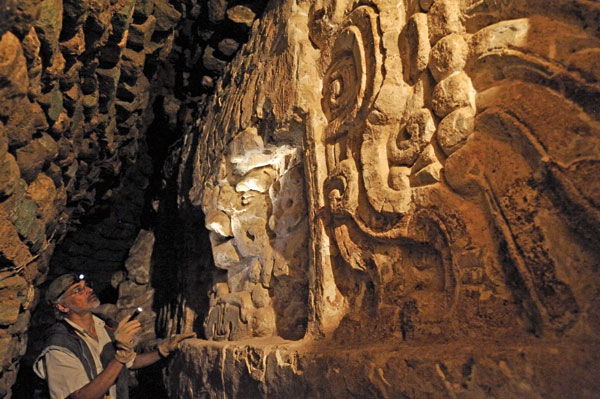
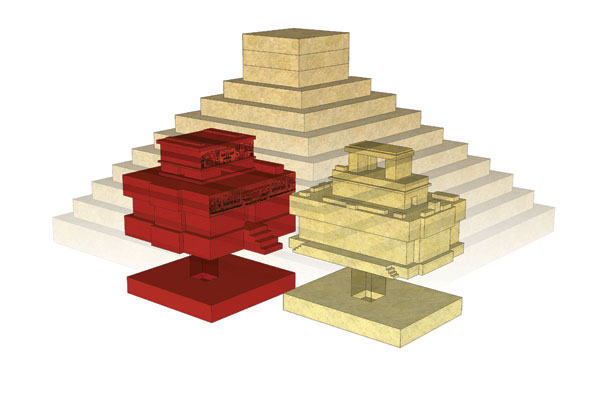
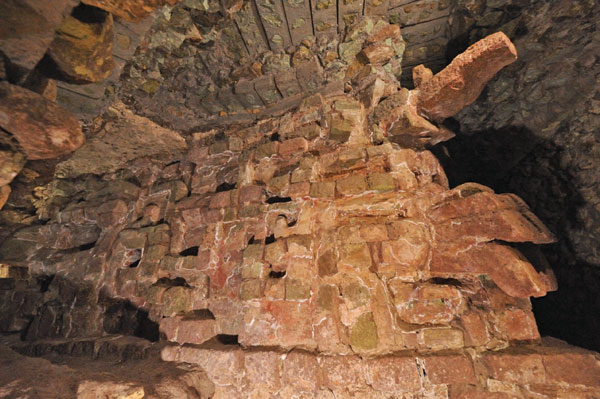





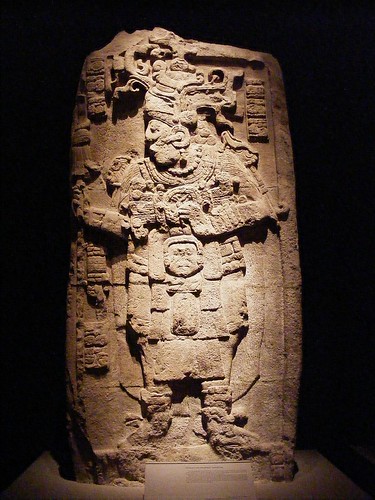


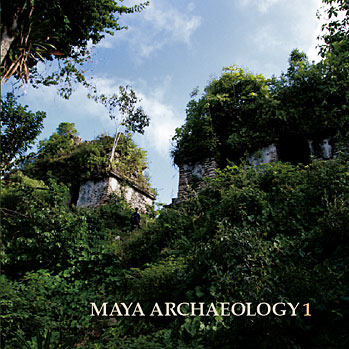









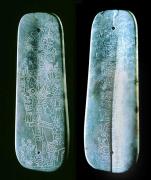


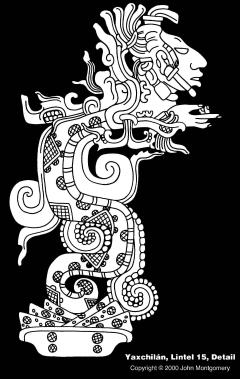

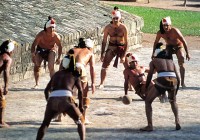


0 Comments:
Post a Comment
<< Home